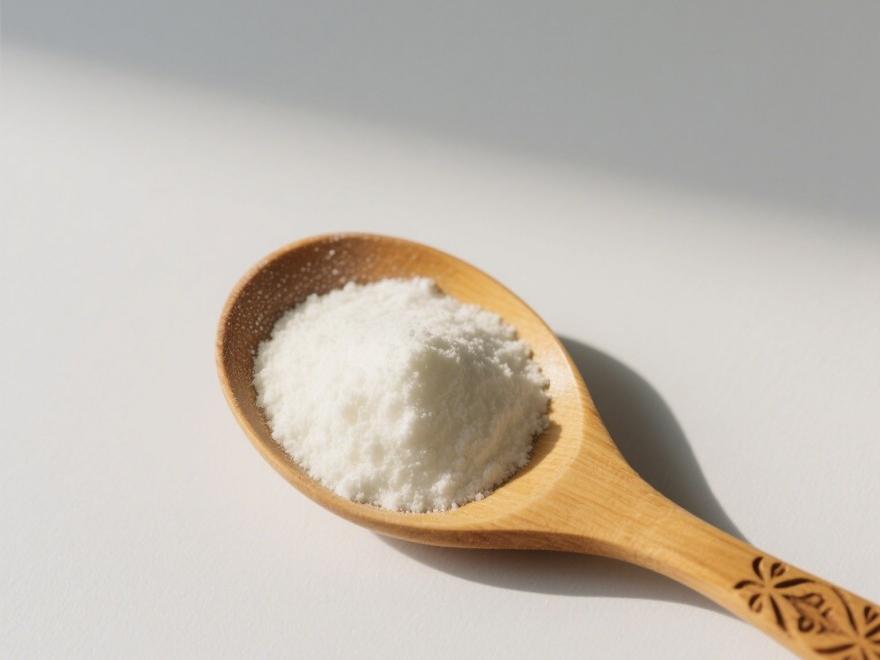What Are the MCT Oil Uses in Hindi?
Fatty acids can be classified into three types based on the length of their carbon chains: short-chain, medium-chain, and long-chain다. Among these, medium-chain fatty acids (MCFAs) typically refer to fatty acids with carbon chains containing 6 to 12 carbon atoms. primarily including octanoic acid (C8) and decanoic acid (C10) fatty acids, as well as small amounts of hexanoic acid (C6) and lauric acid (C12) fatty acids [1]. These undergo esterification reactions with the three hydroxyl groups of glycerol, forming medium-chain triglycerides (MCTs). The most typical MCTs are saturated caprylic acid triglycerides, saturated decanoic acid triglycerides, and saturated octanoic acid-decanoic acid triglycerides [2].
Natural MCTs are only found in natural fats such as coconut oil, animal breast milk fat, and palm kernel oil, and their content is relatively low, ranging from 3% to 5% [3]. Therefore, the primary source of MCTs currently is through the esterification of medium-chain fatty acids (MCFAs) MCFAs) with glycerol, followed by purification. Since MCTs are composed of medium-chain fatty acids with shorter carbon chains, they have characteristics such as low melting/boiling points, small molecular weight, low density. At room temperature, they are colorless, odorless, oily liquids with low viscosity and surface tension. Compared to other common fats, MCTs have very low levels of unsaturated fatty acids, with an iodine value below 0.5, conferring excellent oxidative stability [4].
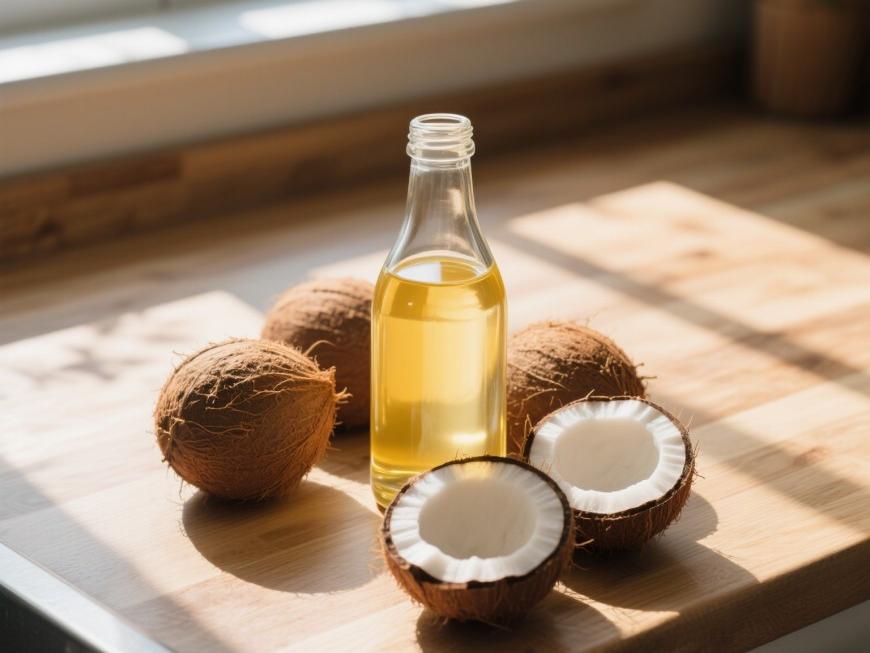
Additionally, the metabolic rate of MCT is 10 times faster than that of ordinary long-chain triglycerides (LCT). This is because MCT can be rapidly hydrolyzed in the human body, producing medium-chain fatty acids (MCFA) that bypass the lymphatic system, but are directly transported via the portal vein to the liver, where they are rapidly broken down and quickly converted into energy [5]. Therefore, based on these unique physical properties and metabolic characteristics, MCT has been widely applied in food, nutrition, and pharmaceutical fields.
In the 1950s, MCT was introduced into various clinical nutritional settings [6], and subsequently passed food safety tests in the EU, the United States, and Japan, and was approved as a 식품 첨가물 or functional food ingredient. In 1986, China included MCT powder as a food additive in GB 2760-86, the “Hygienic Standards for the Use of Food Additives”; in 2012, medium-chain fatty acid glycerides edible oil was approved by the Ministry of Health as a new resource food [7]. In Hindi, medium-chain triglycerides have gained recognition in the food industry for their superior performance and application value, and they offer numerous health benefits for the human body. such as treating fat malabsorption, lactose intolerance, hyperlipidemia, and obesity. MCT can serve as a stabilizer, emulsifier, and lubricant, and can also be used as raw materials or auxiliary materials in the production of food, pharmaceuticals, cosmetics, and health supplements. It holds broad application prospects in functional foods, pharmaceuticals, and daily chemical industries [8].
This paper discusses the synthesis and preparation methods, detection and analysis techniques, as well as the applications of MCT oil powder in food, pharmaceuticals, and other fields. It systematically analyzes and compares the advantages and disadvantages of different methods and technologies, aiming to provide references for the development and application of MCT through comparative analysis.
1 Synthesis of Medium-Chain Fatty Acid Triglycerides
1.1 Chemical Method
The chemical method primarily refers to the use of non-enzymatic catalysts to esterify MCFA with glycerol to synthesize MCT. This method mainly includes strong acid-catalyzed esterification, hydrolysis esterification, and acyl chloride alcoholysis.
1.1.1 Strong Acid-Catalyzed Esterification
This method involves esterifying MCFA with glycerol under the catalysis of a strong acid catalyst, followed by purification to obtain MCT powder. Tong Yingying [9] used caprylic acid and glycerol as raw materials, an acidic ionic liquid as a catalyst to synthesize MCT. The reaction was conducted at 160°C for 14.03 hours, yielding MCT with a conversion rate of 95.48% and a yield of 92.90%. and after separation and purification, the MCT content in the final product was 96.15%. Yu Chuntao et al. [10] used solid-supported phosphotungstic acid as a catalyst to esterify MCFA and glycerol under vacuum conditions to synthesize MCT.

The results showed that the esterification rate of MCT was 85%, and the yield reached 75%. Zhou Guocheng et al. [11] used self-prepared superacid XaYb·SO₄ as a catalyst, with octadecanoic acid and glycerol as raw materials to synthesize MCT. The results showed that under reaction conditions of 200°C and a catalyst loading of 0.8% of the total mass, high-quality MCT could be obtained. Therefore, the strong acid-catalyzed esterification method for synthesizing MCT exhibits high catalytic activity, a simple process, and minimal pollution. However, strong acid catalysts are costly, corrosive to reaction equipment, produce dark-colored products with an odor, and generate a significant amount of waste liquid, which is unfavorable for environmental protection.
1.1.2 Hydrolysis-esterification method
The hydrolysis-esterification method uses oils containing MCFA as the starting material, which are hydrolyzed and fractionated to obtain medium-chain fatty acids such as caprylic acid and capric acid, which are then esterified with glycerol, followed by neutralization, decolorization, and refining to obtain high-quality, high-purity MCT [12]. Industrially, common methods include atmospheric pressure acid hydrolysis, high-pressure continuous hydrolysis, and medium-pressure hydrolysis of oils [13]. Yu Chuntao et al. [14] used molecular distillation technology to refine and purify MCT under the following reaction conditions: the feed rate for the first-stage molecular distillation was 1.6 L/h, pressure was 10 Pa, and temperature was 105–110°C; the feed rate for the second stage molecular distillation was 1.2 L/h, pressure 1 Pa, and temperature 200–210 °C. Under these conditions, after purification using a two-stage serial molecular distillation method, the purity of MCT reached 97%. Although this method achieves high purity of medium-chain fatty acid triglycerides, it has drawbacks such as difficulty in separating by-products, a lengthy hydrolysis process, and high energy consumption.
1.1.3 Alcoholysis Method
The alcoholysis method involves reacting MCFA with sulfuryl chloride (SOCl₂), trihalophosphine (PX₃), or pentahalophosphine (PX₅) to form acyl chlorides, which are then reacted with glycerol via an alcoholysis reaction to produce MCT powder. Wei Yiliang et al. [15] synthesized medium-chain fatty acid methyl esters from camphor tree seed kernel oil, followed by fractionation, obtaining high-purity methyl octanoate and methyl decanoate. These were then used as raw materials to synthesize MCT using a one-step method and a stepwise temperature-rising method, with the results showing that the esterification rates for both methods were 83.10%. The process of synthesizing medium-chain fatty acid triglycerides using this method has low energy consumption and short reaction times; however, the process route is relatively complex, the product yield is low, and a large amount of by-products are generated, resulting in significant pollution, which is unfavorable for environmental protection.
1.2 Enzymatic synthesis
Enzymatic synthesis refers to the reaction of glycerol with specific fatty acid glycerides under the catalysis of specific immobilized enzymes to produce MCT [16], primarily including direct esterification and ester exchange methods.
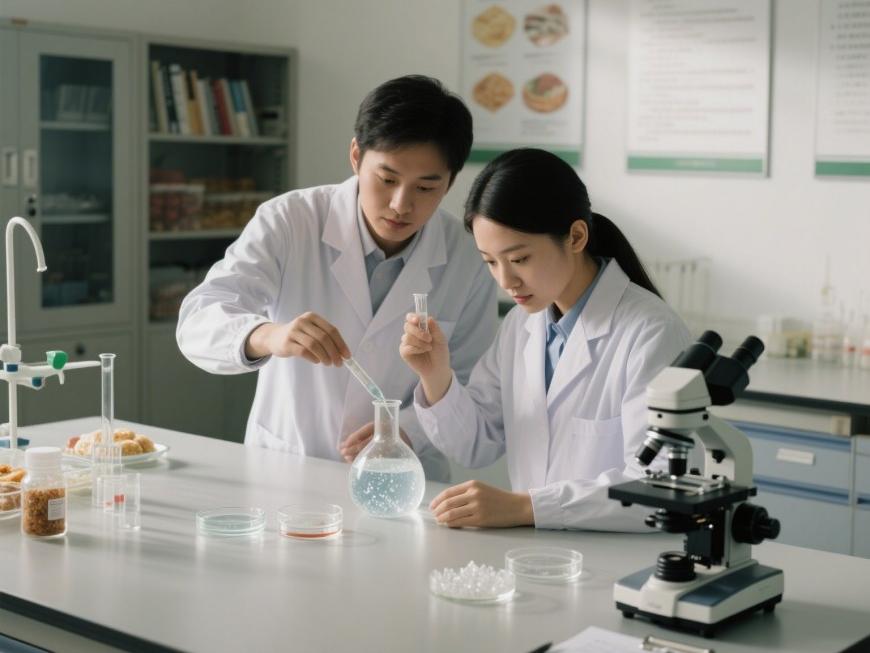
1.2.1 Direct esterification by enzymes
The biological enzyme direct esterification method is a biological synthesis method that involves the reaction of medium-chain fatty acids with glycerol, or with specific fatty acid glycerides, under the catalysis of specific immobilized lipases to produce MCT. medium-chain fatty acids are esterified with glycerol or specific fatty acid glycerides to produce MCT. Yang et al. [17] employed a response surface design method, using Novozym 435 lipase as the catalyst, to catalyze the esterification reaction between glycerol and medium-chain fatty acids in a solvent-free system, producing medium-chain triglycerides.
The results showed that when the enzyme concentration was 6.5%, the substrate molar ratio was 3.5:1, and the reaction was conducted at 90°C for 12.97 hours, medium-chain triglycerides were synthesized, with an average glycerol triacylglycerol yield of 78.5% and a content of medium- and long-chain glycerol triacylglycerols in the product of 85.6%, which is consistent with the specifications for medium- and long-chain glycerol triacylglycerol products. Ma Chuanguo et al. [18] used lipase Lipozyme 435 as a catalyst to catalyze the reaction of glycerol with a mixture of octanoic acid and decanoic acid in a solvent-free system to produce medium-chain triglycerides, with a yield of 92.10%.
PAN et al. [19] used a self-prepared acidic ionic liquid [C4 MIM]PF6 as the solvent and Novozym 435 as the catalyst to catalyze the reaction between octanoic acid and glycerol to synthesize medium-chain glycerides. The results showed that when the temperature was 66.7°C, the lipase addition was 6.1% of the substrate mass, and the molar ratio of octanoic acid to glycerol was 4.5:1, the yield reached 92.4%. This method for synthesizing medium-chain triglycerides exhibits high catalytic activity, high safety, good selectivity, and mild reaction conditions. However, this method requires high-temperature-resistant enzymes, has high costs, involves a complex and time-consuming process, and has low reusability of the biological enzymes.
1.2.2 Enzymatic ester exchange method
The enzymatic ester exchange method refers to the process of generating MCT powder by exchanging the acyl groups between different triglycerides or between triglycerides and fatty acid esters. Lu Jiyuan et al. [20] used Lipozyme 435 lipase as a catalyst to catalyze the ester exchange reaction between medium-chain triglycerides and soybean oil esters to prepare medium-chain triglycerides, and optimized the reaction conditions using response surface methodology. The results showed that under the conditions of a mass ratio of medium-chain triglycerides to soybean oil of 60:40, an enzyme addition of 5.5%, and a reaction temperature of 89°C for 4.36 hours, the content of medium-chain triglycerides reached 84.15%, and the product specifications met national standards.
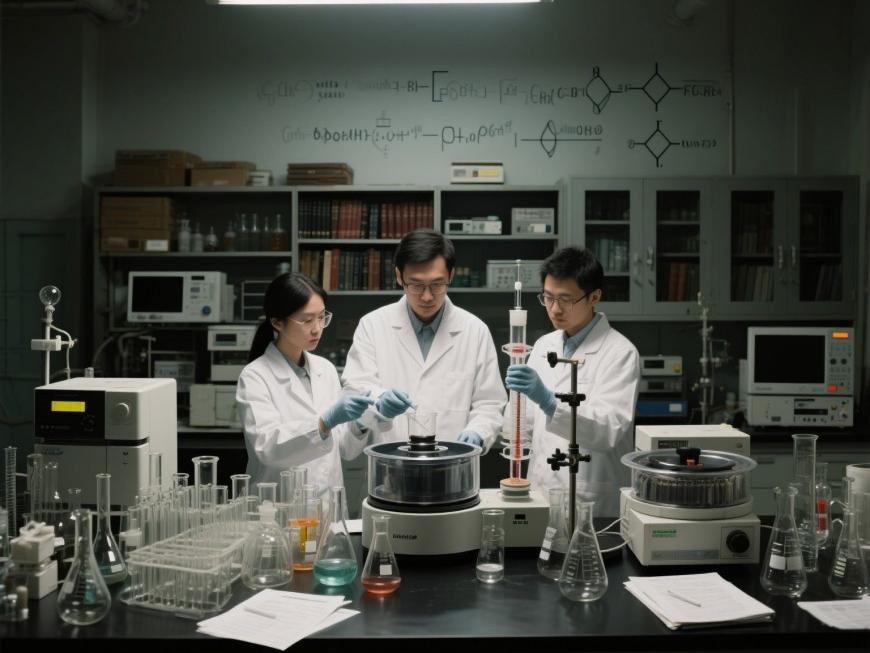
Huang Zhaoxian et al. [21] used perilla oil and MCT powder as raw materials, with lipase Lipozyme RM IM as the catalyst, and synthesized medium-chain triglycerides via an ester exchange method. The molar ratio of MCT to perilla oil was 4:6, with an enzyme addition of 6%, reaction was conducted at 60°C for 4 hours. The results showed that the yield of medium-chain triglycerides exceeded 70%, and after purification, the triglyceride purity in the product reached 97%. In the synthesis of medium-chain triglycerides using this method, two or more triglycerides with different fatty acid chains are formed after the ester exchange reaction. Therefore, this method is difficult to synthesize target products with high content and is mainly used for local modification of lipids or synthesis of triglycerides with uncertain fatty acid chains. This method is cost-effective and uses readily available raw materials, but the products have poor positional specificity and are unsuitable for synthesizing MCTs with known chemical structures.
1.3 Physical-Assisted Synthesis Method
The physical-assisted synthesis method involves using physical methods such as ultrasound or microwave radiation to enhance the esterification reaction. Microwave radiation can directly couple with the reactants to produce instantaneous heating, thereby increasing the temperature, accelerating the reaction rate; ultrasound can directly transfer energy to the reactants, accelerating the conversion of reactants to products, thereby accelerating the esterification reaction and improving the reaction yield. BHASKAR et al. [22] used Amberlyst-15 as a catalyst and performed ultrasonic cavitation pretreatment, synthesized hexanoic acid glycerol triacylglycerol in a solvent-free reaction mixture. The molar ratio of reactants was 5:3 (glycerol/fatty acid), the loading amount of Amberlyst-15 was 5%, and the reaction temperature was 140°C. Compared with the conventional synthesis of hexanoic acid glycerides, the reaction time was reduced to 7 h, with a maximum conversion rate of 96%.
DESHMANE et al. [23] studied the synthesis of medium-chain glycerides using sulfuric acid as a catalyst and fatty acids and glycerol as raw materials under ultrasonic conditions, with a reaction time of approximately 6 hours and a conversion rate of about 98.5%. JADHAV et al. [24] used acidic Amberlyst-15 as a catalyst and a microwave-assisted method to synthesize tri-octanoic acid glycerides, with a molar ratio of octanoic acid to glycerol of 3:5, a reaction temperature of 800°C, a catalyst addition of 4%, the microwave-assisted reaction was conducted for 16 minutes, achieving a conversion rate of 99.5%, while the conventional process only reached a conversion rate of 10% within 16 minutes of reaction. Therefore, microwave synthesis can achieve higher conversion rates in a shorter time compared to traditional synthesis, making it the optimal choice for the long-term conventional synthesis of medium-chain triglycerides. In summary, the use of physical auxiliary methods such as ultrasound and microwave radiation to enhance the synthesis of MCT offers significant advantages over traditional synthesis methods. This represents a novel green esterification synthesis auxiliary preparation technology that is environmentally friendly, safe, energy-efficient, and catalyst-efficient.
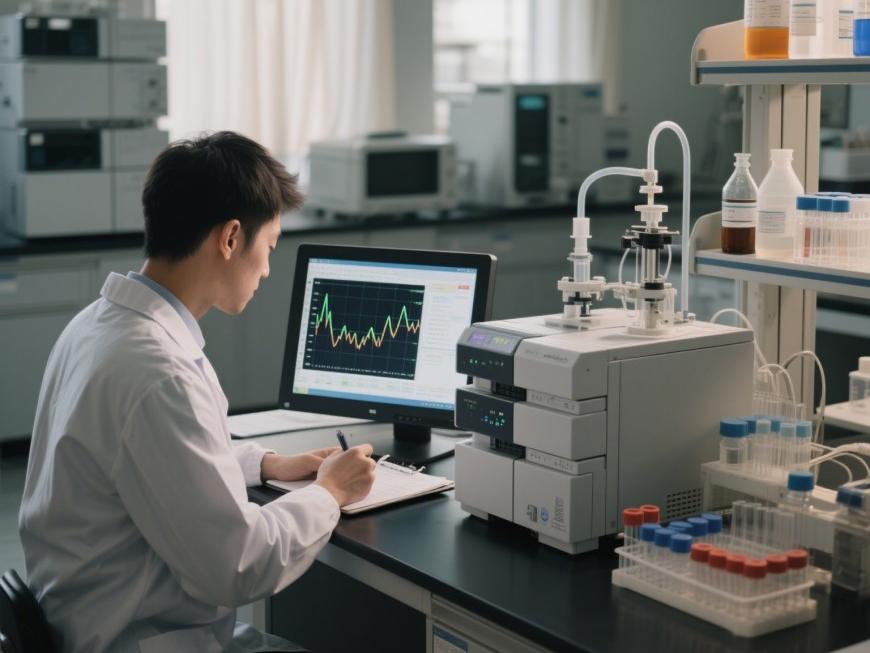
1.4 Comparison of Various Synthesis Methods
Chemical synthesis of medium-chain triglycerides involves a simple process, low energy consumption, short reaction time, and relatively low costs. However, by-products are difficult to separate, leading to product contamination, low conversion rates, dark product color, unpleasant odor, high pollution, and environmental unfriendliness. Enzymatic synthesis has high catalytic activity, high product specificity, mild reaction conditions, good product quality and color, no odor, no pollution, and is environmentally friendly. However, the biggest drawback of enzymatic catalysis is the high cost of enzyme catalysts, resulting in high overall production costs and difficulty in achieving large-scale production. Physical-assisted synthesis is a novel green auxiliary preparation technology that has been extensively studied in esterification synthesis. It exhibits excellent selectivity, low energy consumption, no pollution, and high catalytic efficiency. Research related to this method will continue to deepen [25].
2 Detection Techniques
2.1 Thin-Layer Chromatography
Thin-layer chromatography (TLC) has been widely applied in lipid separation. However, due to its limited separation efficiency, this method is only suitable for the separation of single glycerides, diacylglycerols (DAGs), triglycerides (TAGs), free fatty acids (FFAs), and cholesterol [26]. Pengon et al. [27] used thin-layer chromatography to determine the content of fatty acids and their glycerides in coconut oil, using a solvent system A of V(hexane) : V(ether) : V(acetic acid) = 60 : 40 : 1, V(hexane) : V(ethyl acetate) : V(acetic acid) = 60 : 40 : 0.5 as solvent system B. Coconut oil, FFA standards, and their glycerides were analyzed on silica gel 60 F254 thin-layer plates, and spots were detected and compared under a 254 nm ultraviolet lamp and iodine vapor. The results indicated that solvent system A had better solubility than solvent system B, and the retention factors (Rf) of the components were consistent with their polarity. This method can provide guidance for the qualitative analysis of coconut oil.
2.2 Gas Chromatography
Gas chromatography (GC) is one of the widely used analytical methods for MCT. Due to the physical and chemical properties of MCT, such as boiling points close to decomposition temperatures and thermal instability, when determining the content of medium-chain triglycerides using gas chromatography, the medium-chain triglycerides are typically heated and refluxed in a methanol-sulfuric acid mixture for several hours, The purpose of this step is to hydrolyze and methylate the MCT. The sample solution is then obtained after a series of pretreatments with hexane, and the content of the methyl ester derivatives is determined using gas chromatography [28]. The content of each derivative component is calculated using the normalization method, thereby indicating the corresponding characteristic content of each component in the product.

Li Kun et al. [29] used GC to determine the composition and content of MCT, selecting an HP-5 capillary column (30 m × 0.32 mm × 0.25 m) and an FID detector. The results showed that the chromatographic peak areas of octanoic acid, caprylic acid glyceride, caprylic acid diglyceride, and caprylic acid triglyceride showed good linear relationships between their chromatographic peak areas and concentrations, with linear correlation coefficients R² ranging from 0.9947 to 0.9998, and relative standard deviations (RSD) ranging from 0.261% to 2.527%. The spiked recovery rates were 95.732% to 102.703%, with RSD values ranging from 0.261% to 2.527%. RSD) was 0.261% to 2.527%; the recovery rate was 95.732% to 102.703%, with an RSD of 0.728% to 3.028%.
The results indicate that this method has good repeatability and precision and can be used for the determination of octanoic acid, octanoic acid glycerol monester, octanoic acid glycerol diester, and octanoic acid glycerol triester. Zhao Jingzi et al. [30] used GC to determine the fatty acid composition of octanoic acid-decanoic acid-polyethylene glycol glycerides. The experiment employed a DB-WAX capillary column (30 m × 0.53 mm × 1.0 μm) and an FID detector. The results showed that the relative standard deviations (RSDs) of methyl hexanoate, methyl octanoate, methyl decanoate, and methyl laurate were all less than 1.5%, indicating that this method can achieve rapid and accurate analysis of the fatty acid composition in caprylic acid-capric acid-polyethylene glycol glycerides with good reproducibility.
Additionally, high-temperature gas chromatography (HTGC) can enable direct analysis of high-boiling-point triglycerides, eliminating the need for complex methyl ester derivatization procedures and avoiding issues caused by incomplete derivatization. HTGC) can directly analyze high-boiling-point triglycerides, eliminating the need for complex methyl ester derivatization, thereby avoiding measurement errors caused by incomplete derivatization and making the analysis of MCT more convenient and accurate [31]. Wang Lili et al. [32] used high-temperature gas chromatography to determine the content of glycerides and fatty acids in oils, employing external standard quantification and retention time for qualitative analysis. The experiment utilized a DB-1ht capillary column (30 m × 0.25 mm × 0.1 μm) and a FID detector, with a detection temperature of 360°C and an analysis time of 30 minutes. The results showed that within the range of 0.5–20.0 mg/mL, the peak area was in good linear correlation with the mass concentration of the analyte, the sample recovery rate was 95.69% to 105.78%, and the relative standard deviation (RSD) was 0.27% to 2.98%. Therefore, this method demonstrates good precision and repeatability for the analysis and detection of various fatty acids and glycerides.
2.3 Liquid Chromatography Method
Liquid chromatography can be used to analyze MCT under mild analytical conditions, and the volatility and thermal instability of MCT do not affect the liquid chromatography method. Yang Bo et al. [33] used high-performance liquid chromatography-refractive index detection (HPLC-RID) to quantitatively analyze glycerol diesters in fats and oils, employing the external standard method for quantification. Nova-Pak 3.9 mm × 150 mm silica gel was selected as the stationary phase, and hexane-isopropanol (volume ratio 50:1) was used as the mobile phase. The results showed a good linear relationship in the range of 1.0–10.0 mg/mL, with an RSD of 1.27%, with an average recovery rate of 101.9%, successfully achieving the quantitative analysis of glycerol diesters in fats.
FLISZAR et al. [34] established a method for analyzing medium-chain glycerol esters using reverse-phase high-performance liquid chromatography. A Waters Symmetry C18 (150 mm × 4.6 mm × 3.5 μm) column was used, with acetonitrile and water as the gradient. This method employed an external standard quantification method to accurately determine the concentrations of each component, total monoglycerides, total diglycerides, total triglycerides, total free fatty acids, and the ratio of octanoic acid to hexanoic acid, monitoring the eluent at a wavelength of 220 nm, to determine the relative response factors of all components, thereby achieving accurate quantification of medium-chain triglycerides.

Shen Jie et al. [35] used high-performance liquid chromatography-evaporative light scattering detection (HPLC-ELSD) to determine the content of tri-octanoic acid glycerol ester and cholesterol in propofol emulsion injection. using a Cosmosil 3 C18-EB chromatographic column (100 mm × 2.0 mm × 3 μm), with methanol-water (volume ratio 97:3) as the mobile phase, and a column temperature of 30°C. The experimental results showed that when the mass concentration of tri-octanoic acid glyceride was 53.25–426.00 μg/mL, the logarithm of the concentration was linearly related to the logarithm of the peak area, with a linear correlation coefficient of 0.9996, the average recovery rate was 99.41%, and the relative standard deviation (RSD) was 2.16%. This indicates that the method is rapid, accurate, and highly sensitive, and can be used for the determination of triacylglycerol content.
2.4 Chromatography-Mass Spectrometry Coupling Technology
Chromatography-mass spectrometry coupling technology primarily includes two major categories: high-performance liquid chromatography-mass spectrometry (HPLC-MS) and gas chromatography-mass spectrometry (GC-MS). Chromatography-mass spectrometry coupling technology combines the high separation capability of chromatography for complex compounds with the high resolution, high sensitivity, and accurate identification capabilities of mass spectrometry, making it suitable for both qualitative and quantitative detection of MCT, thereby providing an effective analytical method for MCT detection [36].
Wang Yong et al. [37] used HPLC-MS to determine the purity of glycerol diester, with acetonitrile-isopropanol-formic acid (volume ratio 550:450:0.5) as the mobile phase, and selected Pin-nacle IIC18 (150 mm × 2.1 mm × 5 μm, ) as the column, and mass spectrometry with an electrospray ionization (ESI) source in positive ion mode. The results showed that within the mass concentration range of 1.01–2.0 mg/mL, the standard curve for glycerol diester exhibited good linearity, with recovery rates ranging from 104% to 109% and relative standard deviations (RSD) of 0.69% to 5.19%. This indicates that the glycerol diester in the standard sample has high purity and is free of monoglycerides and triglycerides.
Zou Jiankai [38] employed gas chromatography-mass spectrometry (GC-MS) to separate glycerol esters of octadecanoic acid, using an HP-5MS column (30 m × 0.25 mm × 0.25 μm) with a split/splitless injection port, successfully separating the components of octadecanoic acid glycerides, including di-octadecanoic acid glycerides, diacid glycerides, triacylglycerides, diacid monoglycerides, and monoglycerides, and the EI mass spectra of each compound were determined.
2.5 Comparison of various detection methods
TLC has the advantages of simple apparatus, wide applicability, low cost, and convenient operation. However, its main drawbacks are low precision and inability to perform quantitative detection, so it is not typically used as the primary detection method. GC can accurately determine the purity of MCT and the composition of fatty acids, but it requires a specialized temperature program to reach approximately 380°C, which causes significant baseline drift; the procedure is cumbersome and complex, results are easily influenced by the efficiency of methyl esterification derivatization, and analysis time is lengthy, often exceeding 30 minutes per sample.
High-temperature gas chromatography does not require methyl esterification derivatization, but high temperatures can cause severe loss of the stationary phase in the capillary column and shorten column lifespan. HPLC has the advantages of high precision, high resolution, short analysis time, wide applicability, simple sample pretreatment, low column temperature, and small fluctuations in response values, making it an efficient and accurate analytical method for determining MCT content. The combination of chromatography and mass spectrometry integrates the high separation capability of chromatography for complex compounds with the high resolution, high sensitivity, and accurate identification capabilities of mass spectrometry. The rapid development of this technology has provided effective analytical tools for the composition and structural identification of medium-chain triglycerides.
3 Applications of MCT
3.1 Applications of MCT in the food industry
3.1.1 Functional foods
The metabolic transport process of MCT is independent and does not rely on the carnitine transport system, resulting in very fast metabolic rates and rapid, efficient energy production. This makes MCT an ideal ingredient for sports nutrition to enhance athletes' endurance and quickly alleviate fatigue [39]. Additionally, the calorie content of medium-chain triglycerides is significantly lower than that of standard fats, while also enhancing satiety. They promote metabolism in the body without storing fat, making medium-chain triglycerides widely used in weight loss products [40].
Currently, it is widely used in cakes, ice cream, and chocolate, and many European and American countries have incorporated it into the diets of obese patients, achieving good results [41]. Additionally, since MCT is not only easily digested and absorbed in the body but also metabolized very quickly in the bloodstream, it is highly suitable for post-surgical infections, skin burns, AIDS, lipid malabsorption, and cancer patients [42]. Furthermore, since it does not adversely affect blood glucose and insulin concentrations, it is also suitable for use in the diets of diabetic patients. Furthermore, due to the low activity of lipoprotein lipase and liver lipase in infants, which may lead to fat accumulation in organs, medium-chain triglycerides can serve as a rapid energy source, playing an important role in the growth and development of infants with underdeveloped digestive systems, especially premature infants and weak infants [43].
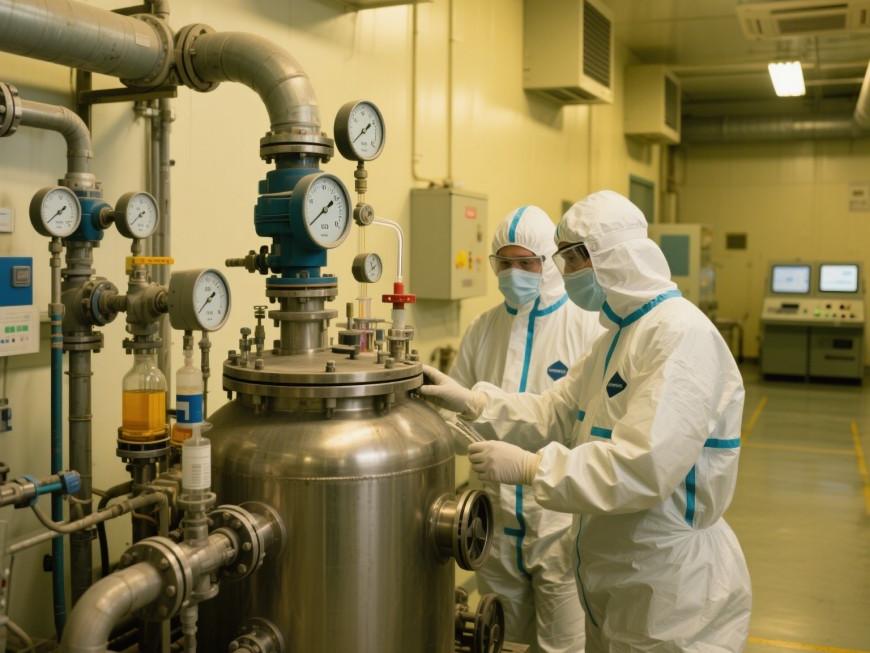
3.1.2 Food additives
When used as a food additive, MCT can serve as a carrier for edible flavorings and colorants. During food baking, medium-chain triglycerides are commonly used as anti-adhesive agents to prevent baked goods from sticking to pans or molds; in sausage molding processes, pure medium-chain triglycerides or their blends with vegetable oils are frequently used as lubricants and release agents; MCT is also used to replace easily oxidizable dairy fats in the production of milk wine and cheese substitutes. When MCT is mixed with other emulsifiers, it exhibits good miscibility and strong antioxidant properties, making it frequently used in chocolate, ice cream, and cheese products to improve appearance and texture.
3.2 Applications of MCT in the pharmaceutical field
MCT has been used in clinical nutrition to treat malnutrition, fat malabsorption, celiac disease, chronic pancreatic insufficiency, intestinal fistulas, bile duct obstruction, hyperlipidemia, high cholesterol, obstructive jaundice, inflammatory bowel disease, fatty liver, pancreatitis, and other related conditions [44]. In June 2020, triglyceride-based MCT developed by Ultragenyx was approved by the U.S. Food and Drug Administration (FDA) for marketing. This drug is the first FDA-approved medication for the treatment of long-chain fatty acid oxidation disorders [45]. Additionally, FDA), making it the first FDA-approved drug for the treatment of long-chain fatty acid oxidation disorders [45].
Additionally, MCT, due to its excellent antioxidant properties, solubility, low viscosity, and low freezing point, and its ability to reduce bacterial heat resistance, making it widely used in various pharmaceutical formulations. For example, MCT significantly enhances the digestion and absorption of fat-soluble vitamin E in the human body, serving as a dietary supplement for individuals with poor digestion or low energy absorption. Furthermore, when pharmaceuticals are formulated into emulsions using MCT, their bioavailability is significantly improved [46, 47].
3.3 Applications of MCT in Cosmetics
MCT can serve as an alternative to petroleum jelly, lanolin, and squalane in cosmetics, exhibiting excellent oxidative stability and emulsification stability, thereby enhancing the shelf life of cosmetics. Additionally, they can serve as base excipients for moisturizing agents, diluents for cosmetics, antifreeze agents, and homogenizers [48]. Furthermore, due to its antibacterial activity, it can be used as a moisturizer, emollient, skin softener, and emulsifier with strong antibacterial properties. Its mild nature allows it to be well absorbed by the skin.
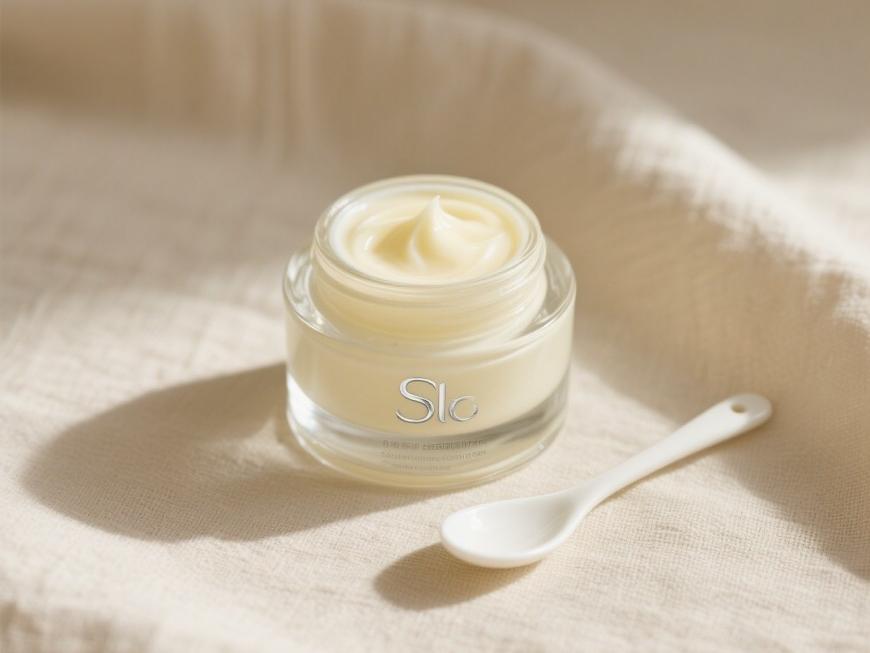
4 결론 및 전망
In summary, compared to ordinary oils, medium-chain triglycerides have more physiological functions and richer nutritional value, and hold great potential in human health and commercial applications. With the advancement of science and technology, there is an increasing understanding of the characteristics, properties, and application value of medium-chain triglycerides, and their application scope is expanding, particularly in the food industry, where the demand for medium-chain triglycerides is growing rapidly. Therefore, research on the synthesis routes and analytical detection methods of medium-chain triglycerides is particularly important. In the synthesis of medium-chain triglycerides, enzyme-mediated synthesis of MCT has advantages over chemical methods, such as fewer by-products, better product quality and color, higher safety, milder reaction conditions, and environmental friendliness. it is feasible to adopt enzyme-based synthesis as the primary method, supplemented by physical methods such as ultrasound and microwave, to effectively address the drawbacks of enzyme-based synthesis, such as prolonged reaction times and low conversion rates.
With the development of enzyme technology, the cost of enzyme-based synthesis is expected to decrease, and its commercialization is imminent. Additionally, in the analytical methods for detecting medium-chain triglycerides (MCT), GC can accurately determine the purity of MCT and the composition of fatty acids, while HPLC offers high precision, a wide application range, and simple sample pretreatment. Both methods are suitable for efficient and accurate analysis of MCT. Furthermore, with the rapid development of chromatography-mass spectrometry (GC-MS) technology, effective analytical tools have been provided for the identification of the composition and structure of medium-chain triglycerides. Therefore, in the current era of rapid technological progress, appropriate methods can be adopted in actual production and testing to study medium-chain triglycerides, and efforts should be made to actively promote the development, application, and industrialization of MCT, thereby contributing to food safety and human health.
참조
[1]TRAUL K A , DRIEDGER A , INGLE D L , et al. Review of the toxicologic properties of medium-chain triglycerides [ J ] . Food and Chemical Toxicology , 2000 , 38(1) :79 98.
[2]MARTEN B , PFEUFFER M , SCHREZENMEIR J. Medium-chain triglycerides[J ]. International Dairy Journal , 2006 , 16 ( 11 ) : 1 374 1 382.
[3]ZHAO G Z , LIU X L , ZHONG L Z R , et al. Research overview of medium chain fatty acid triglyceride[J] . Machinery for Cereals , Oil and Food Processing , 2005(2) :19 21 ;23.
[4 ]TOYOSAKI T , SAKANE Y , KASAI M. Oxidative stability , trans ,
trans-2 ,4-decadienals ,and tocopherol contents during storage of dough fried in soybean oil with added medium-chain triacylglycerols( MCT) [J] . Food Research International , 2008 , 41(3) :318 324.
[5 ]NAGAO K , YANAGITA T. Medium-chain fatty acids : Functional lipids for the prevention and treatment of the metabolic syndrome [J] . Pharmacological Research , 2010 , 61 (3 ) :208 212.
[6 ]NAGAO K , YANAGITA T. Bioactive lipids in metabolic syndrome[J] . Progress in Lipid Research , 2008 , 47 (2 ) :127 146.
[7 ]MA T J. Application of medium-chain triacylglycerols in military functional food[J] . Food and Nutrition in China , 2017 , 23(10) :17 19.
[8 ]TU X H , QIU S K , YUAN Y H. Medium chain triglycerides [ J] . China Western Cereals & Oils Technology , 2002 , 27 (6 ) :45 48.
[9 ]TONG Y Y. Synthesis of medium chain triglycerids and purification [ D] . Zhengzhou:Henan University of Technology , 2013.
[10 ]YU C T , WANG X G , JIN Q Z , et al. Kinetics and thermodynamics on synthesis of medium-chain tri-glycerides using phosphotungstic acid on carbon as a catalyst[J] . Food Science , 2005 , 26 (3 ) :53 56.
[11 ]ZHOU G C , CAI Y , LIU M G. Synthesis of octyl capric glyceride catalyzed by solid superacid [J ]. Lutianhua Technology, 2005 (2 ) : 144 145.
[12 ]LI J C. Triglyceride (dioctylic acid decanoic acid) -A new type of grease[J] . Hangzhou Food Science and Technology , 1993 , ( 1 ) :12 15.
[13 ]XIN Y N , ZHU X L. Technique and technology of fatty acid manufacture of oil and fat by continuer high pressure hydrolyzing split [J] . China Oils and Fats , 2002 , 27 (6 ) :55 57.
[14 ]YU C T , WANG X G , LU C M. Refining of MCT with molecular distillation[J] . China Oils and Fats , 2004 , 29 (3 ) :24 26.
[15 ]WEI Y L , LUO D L , HU J H. Synthesis of medium-chain triglycerides[J] . China Oils and Fats , 2004 , 29 (6 ) :47 49.
[16 ]SHAO K Q , ZHI P H , SHEN X , et al. Research progress on synthesis of medium-chain triglyceride [ J ] . Modern Agricultural Science and Technology , 2011 (4 ) :346 347.
[17 ]YANG K Z , BI Y L , MA S M , et al. Optimization of lipasecatalyzed synthesis of mediumand long-chain triglycerides using response surface methodology[J] . China Oils and Fats , 2012 , 37(2) :51 55.
[18 ]MA C G , TONG Y Y , WANG X P , et al. Enzymatic synthesis of medium chain triglycerides in solvent-free system [ J ] . China Oils and Fats , 2013 , 38 (2 ) :48 51.
[19 ]PAN Q Y , YANG L P , MENG X H. Optimization of enzymatic synthesis of tricaprylin in ionic liquids by response surface methodology[J] . Journal of the American Oil Chemists ′ Society , 2013 , 90 (4 ) :501 509.
[20 ]LU J Y , WANG X S , JIN Q Z , et al. Optimization of Lipozyme 435-catalyzed synthesis of mediumand long-chain triglycerides using response surface methodology[J] . China Oils and Fats , 2017 , 42 (5 ) :15 19.
[21 ]HUANG Z X , WANG M Y , SUN C G , et al. Enzymatic synthesis of medium-and long-chain triacylglycerols based on perilla oil and MCTs[J] . Transactions of the Chinese Society for Agricultural Machinery , 2021 , 52 (1 ) :360 366 ;359.
[22 ]BHASKAR JADHAV H , ANNAPURE U. Sonication pre-treatment for the intensified synthesis of tricaproin using acid-resin catalyst [J] . Chemical Engineering Science , 2022 , 247 :116909.
[23 ]DESHMANE V G , GOGATE P R , PANDIT A B , et al. Process intensification of synthesis process for medium chain glycerides using cavitation[J] . Chemical Engineering Journal , 2008 , 145 (2 ) :351 354.
[24 ]JADHAV H , ANNAPURE U. Greener route for intensified synthesis of tricaprylin using Amberlyst-15 [ J] . Journal of Chemical Sciences , 2021 , 133 (1 ) :1 7.
[25 ]LI K , WANG H , ZHAO S L , et al. Progress in preparation of medium-chain triglycerides[J] . China Oils and Fats , 2015 , 40 (6 ) :82 85.
[26 ]ZHU W X , YANG R , YAN Z T , et al. Development of methods for separation and analysis of triacylglycerols[J] . Chinese Pharmaceutical Journal , 2016 , 51 (14 ) :1 224 1 229.
[27 ]PENGON S , LIMMATVAPIRAT C , LIMMATVAPIRAT S. Simplified qualitative analysis of glycerides derived from coconut oil using thin layer chromatography [ J ] . Advanced Materials Research , 2012 , 1 768 (506 ) :182 185.
[28 ]GU H , CAI X F , YANG L , et al. Determination of medium chain triglycerides by GC[J] . West China Journal of Pharmaceutical Sciences , 2014 , 29 (4 ) :436 437.
[29 ]LI K , WANG H , ZHAO S L ,et al. Determination of composition and content of enzymatic synthesized MCT by gas chromatography [J] . China Oils and Fats , 2016 , 41 (3 ) :96 99.
[30 ]ZHAO J Z , ZHOU M Y , XIONG Y R , et al. Determination of the fatty acid composition in caprylocaproyl polyoxylglycerides by gas chromatography[J]. Drug Standards of China, 2021 , 22(2) :140 145.
[31 ]WEI F , HU N , LYU X , et al. Quantitation of triacylglycerols inedible oils by off-line comprehensive two-dimensional liquid chromatography-atmospheric pressure chemical ionization mass spectrometry using a single column[J] . Journal of Chromatography. A , 2015 , 1 404 :60 71.
[32]WANG L L , WANG Y , HU C Y , et al. Analysis of acylglycerols by high temperature gas chromatography[J] . China Oils and Fats , 2011 , 36(7) :75 79.
[33]YANG B , LI Q S , YANG J G , et al. Analysis of diglyceride concentration by HPLC-RID[J] . China Oils and Fats , 2005 , 30(9) :45 47.
[34]FLISZAR K A , WUELFING W P , LI Z , et al. Profiling of medium chain glycerides used in pharmaceutical formulation development by reversed-phase HPLC[J] . Journal of Pharmaceutical and Biomedical Analysis , 2006 , 40(4) :896 900.
[35]SHEN J , XU Z Q , YUE F , et al. Determination of tricaprylin and cholesterol in propofol liposomes by HPLC[J] . West China Journal of Pharmaceutical Sciences , 2021 , 36(3) :311 313.
[36]WANG X D , LAI W H , WANG X M. Application of determination for foods by high performance liquid chromatography-mass spectrometric techniques [ J ] . Modern Instruments , 2010 , 16 ( 3 ) :9 13;38.
[37]WANG Y , SONG K K , WANG L L , et al. Determination of diacylglycerol content by reversed-phase high performance liquid chromatography[J] . Journal of the Chinese Cereals and Oils Association , 2010 , 25(3) :119 123.
[38]ZOU J K. Determination of the composition of ODO by gas chromatography-EI mass spectrometry [ J ] . Flavour Fragrance Cosmetics , 2002(6) :16 17.
[39]LIU X J , HE G Q , TAO F , et al. Medium-chain triglyceride and its application in food industry[J] . Food Science , 2005 , 26 (8 ) :469 472.
[40]DONG J L , CAO W X , GAO S C. Market and research of low calorie oils and fats(fat substitutes) [ J] . China Oils and Fats , 2000 , 25(3) :5 7.
[41]CRAIG C B , DARNELL B E , WEINSIER R L , et al. Decreased fat and nitrogen losses in patients with AIDS receiving mediumchain-triglyceride-enriched formula vs those receiving long-chaintriglyceride-containing formula[J] . Journal of the American Dietetic Association , 1997 , 97(6) :605 611.
[42]NEBELING L C , LERNER E. Implementing a ketogenic diet based on medium-chain triglyceride oil in pediatric patients with cancer [J] . Journal of the American Dietetic Association , 1995 , 95 (6 ) : 693 697.
[43]BACH A C , BABAYAN V K. Medium chain triglycerides :An update[ J ] . The American Journal of Clinical Nutrition , 1982 , 36(5) :950 962.
[44]MASCIOLI E A , BABAYAN V K , BISTRIAN B R , et al. Novel triglycerides for special medical purposes[J] . JPEN. Journal of Parenteral and Enteral Nutrition , 1988 , 12(6 Supp 1) :127S-132S.
[45]KANG B H. , ZHAO L X. Triheptanoin ,dojolvi[J] . Chinese Journal of Medicinal Chemistry , 2021 , 31(6) :488.
[46]YING H. Medium carbon triglycerideHealthy oil of the New Millennium [J] . Journal of Cereals & Oils , 2000 , 13(4) :43 44.
[47]LUO D L. Medium-chain triglyceride and its application[J] . Journal of Wuhan Polylechnic University , 2002 , 21(2) :4 7.
[48]CHANG Z C. Application of bioengineering in olechemical industry ( Ⅲ ) —Application of medium chain length fatty acid esters in medical , nutrieional and cosmetics [ J ] . China Oils and Fats , 1999 , 24(6) :50 52.


 영어
영어 프랑스
프랑스 스페인
스페인 러시아
러시아 한국
한국 일본
일본